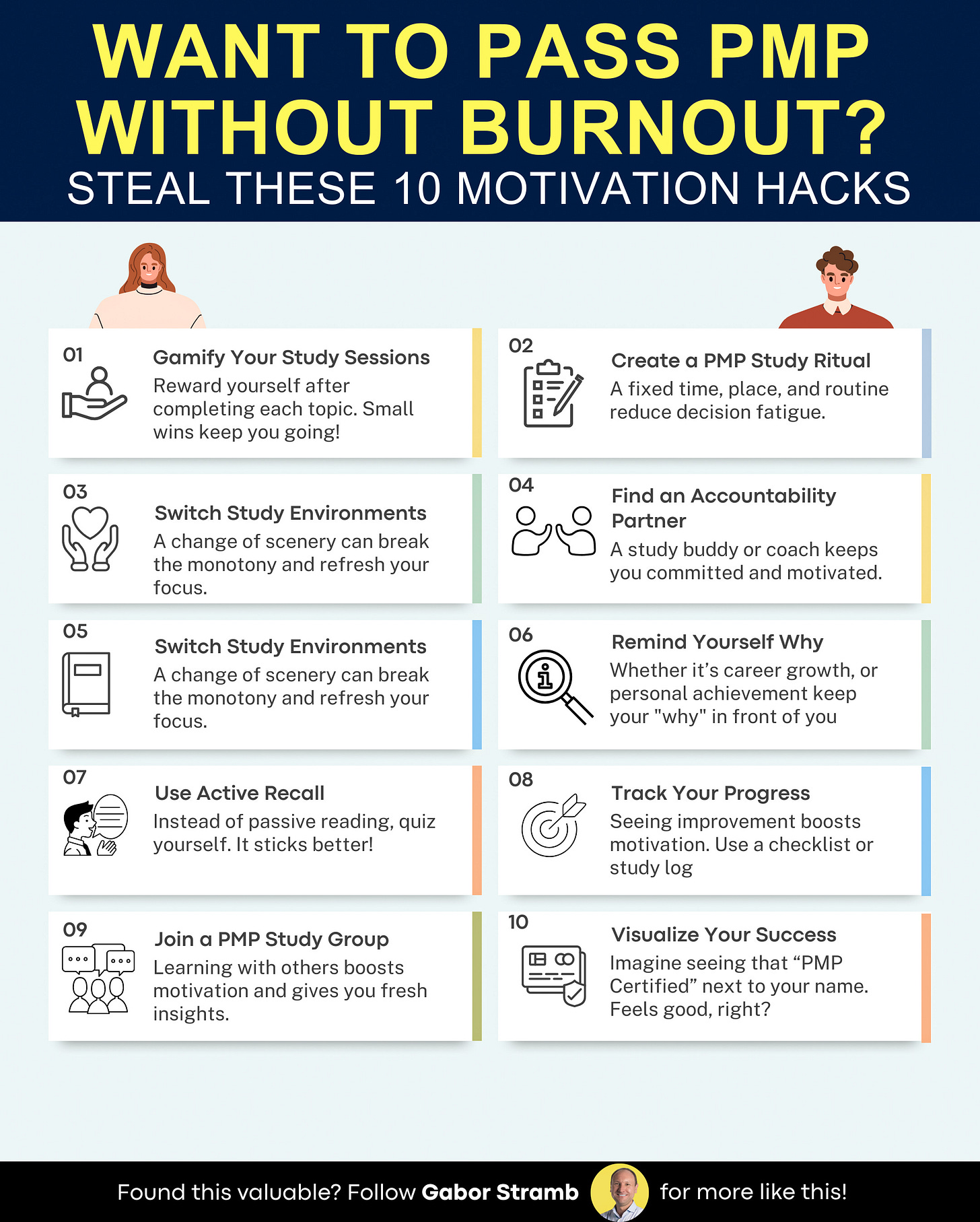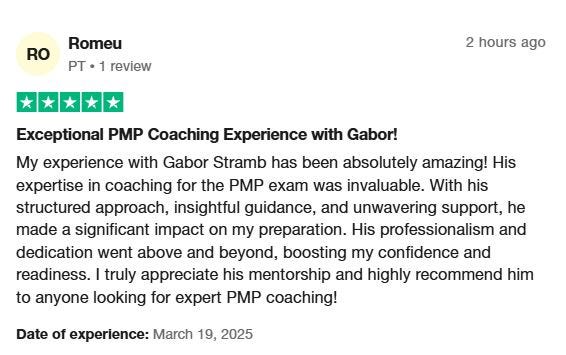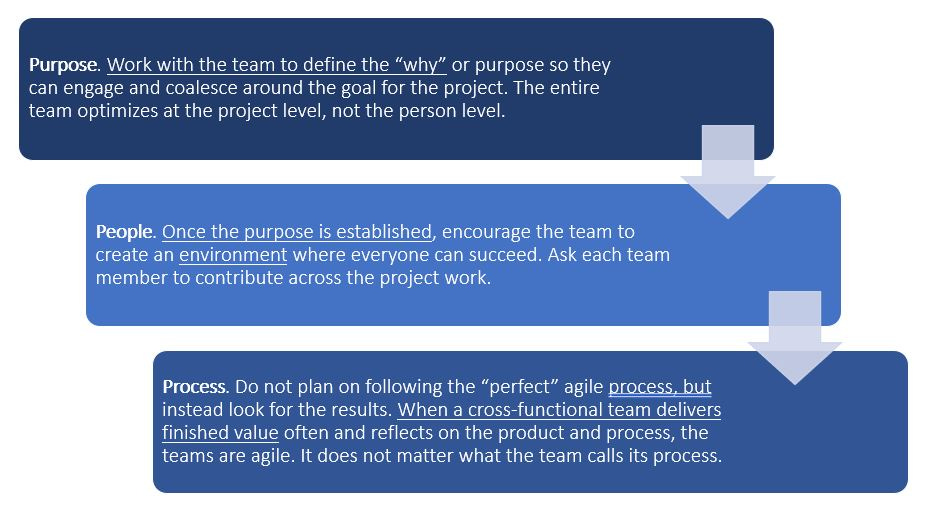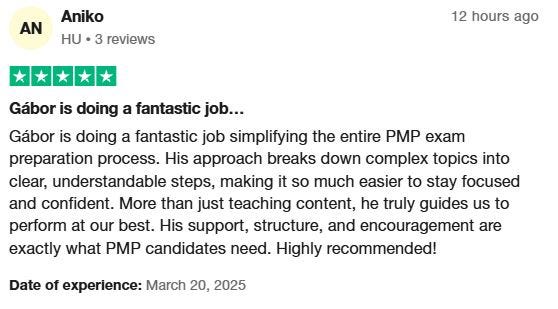Hey, I’m Gabor and welcome to the Agile Admiral weekly newsletter. Your Essential Resource for Project Management Excellence.
Each week I tackle reader questions about PMP preparation, how to implement PMP into real-life projects, and Senior Project manager career
For more: Key to Success in Cloud Migration Projects | PMP Passing Rate | Power of Lessons Learned | Agile Paradox |
What's Inside This Edition:
Want to pass the PMP exam without burnout?
Value of servant leadership
STOP forcing yourself through endless study sessions, try these 10 hacks to keep your energy and focus high:
✔ Gamify your study sessions—small wins keep you going.
✔ Set a study ritual—consistency reduces decision fatigue.
✔ Change your study environment—it refreshes your focus.
✔ Find an accountability partner—commitment is easier together.
✔ Remind yourself why—your "why" fuels your drive.
✔ Use active recall—quizzing yourself makes concepts stick.
✔ Track your progress—momentum builds motivation.
✔ Join a PMP study group—learning with others keeps you engaged.
✔ Visualize success—imagine seeing "PMP Certified" next to your name!
Passing the PMP isn’t just about knowledge, it’s about mindset and endurance.
Servant leaders behaviors
Definition: Servant leadership as a leadership philosophy where the main goal is to serve team members rather than command them.
It involves:
Putting your team's needs before your own
Actively listening to understand challenges and perspectives
Empowering team members by removing obstacles and providing resources
Focusing on growth and development of individuals on your team
Making decisions that benefit the team and project long-term
Leading by example rather than authority
Question to ask: "How can I help my team succeed?"
Also, it includes
Educate stakeholders
Why and how to be agile.
Explain the benefits of business value based on prioritization, greater accountability and productivity of empowered teams, and improved quality from more frequent reviews, etc.
Support the team through coaching, encouragement, and support.
Advocate for team members training and career development.
Through support, encouragement, and professional development, team members take on larger roles,
In Agile we embrace growth mindset -> every skill can be learned -> always coach, enver give up
Help the team with technical project management activities
Like quantitative risk analysis. Sometimes team members may not have knowledge or experience in roles or functions.
Support the team by providing training or undertaking these activities.
Celebrate team successes
Create upward spirals of appreciation
Build goodwill for increased collaboration.
Meaning, Motivation, and Productivity
Another reason that servant leadership works is that servant leaders focus on intrinsic motivation. People who are intrinsically motivated perform better than those who are extrinsically motivated.
Extrinsic motivation is about what you have to do, not what you want to do. The task needs to be done, but it is not fun, interesting, fulfilling, or meaningful. Managers therefore offer incentives or threats of punishment to get the task done. They tell people that if you do this, you will get that. And that is a reward not related to the work itself.
Intrinsic motivation is the opposite. It is about what you want to do, not what you have to do. People are intrinsically motivated when they do something because it is fun, interesting, fulfilling, or meaningful. When you are intrinsically motivated, the work itself is your reward.
One of the most-read articles in the history of the Harvard Business Review was an article by Frederick Herzberg published in 1968 titled: “One More Time: How Do You Motivate Employees?” Herzberg argued that some factors are “hygiene factors” and others are “intrinsic motivators.”
Hygiene factors are company policy and administration, supervision, relationship with the supervisor, work conditions, salary, relationships with peers, personal life, relationships with subordinates, status, and security. These factors are the primary cause of extreme dissatisfaction on the job. Employers need to get these factors right so that employees will not be dissatisfied.
However, more and better hygiene factors will not produce extreme satisfaction—only intrinsic motivators will do that. Those intrinsic motivators include achievement, recognition, the work itself, responsibility, advancement, and growth. The hygiene factors and intrinsic motivators are not the opposite of each other; they represent different needs.
source: servantleadership101
The purpose of this survey is to better understand what type of lessons learned you had on your most recent project. By participating, you will help to enable more focused articles to be created for the project management community.
Fill out the survey here: Survey
Thank you for reading. Appreciate you!
Do you want to pass PMP?
👉🏼Do it together - join the PMP Operation System
https://gaborstramb.com/
👉🏼Do it 1-on-1 - join 8 weeks coaching program
https://gaborstramb.com/special-offer











